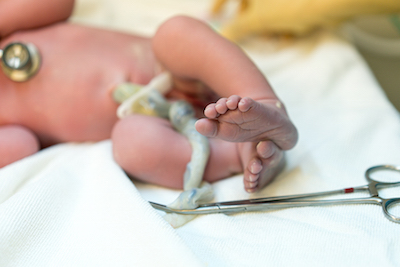How to care for your newborn’s umbilical cord
So you’ve brought your newborn bundle of joy home from the hospital- now what? In your sleep-deprived, brimming with love (and exhaustion) state of mind, you’re probably realizing right about now that you have a lot more questions about how to care for your baby than you realized. You may already have your pediatrician’s phone number on speed dial, and that’s okay! The responsibility of caring for a newborn is challenging for everyone, and it is completely normal to feel a little bit overwhelmed as you’re thrust into this new world of parenthood.
One of the questions you may have as you’re caring for your little one is what to do about the umbilical cord stump. Here is a quick reminder about how to care for baby’s umbilical cord:
What is the umbilical cord?
During pregnancy, the baby receives oxygen and vital nutrients from his mother through the umbilical cord. It is very literally, his lifeline. After birth, the baby will breathe oxygen on his own and receive nutrients through feeding, and the umbilical cord is no longer necessary. Shortly after birth, the umbilical cord is clamped and cut, leaving behind a short stump where it previously attached to the baby’s belly. This little stump initially may appear whitish/blue, and it will gradually turn brown or black over time.
The dos and don’ts of umbilical cord care:
Do:
- Keep it clean and dry!
- If it gets sticky or dirty, clean it with water only and pat dry with a clean cloth.
- Give baby only sponge baths until the stump has fallen off.
- Expose the stump to the air to help dry it out.
- Fold over baby’s diaper in order not to cover the stump.
- Let the stump fall off naturally in its own time.
Don’t:
- Don’t immerse the stump in water.
- Don’t try to remove the stump; let it fall off on its own.
Not too long ago, doctors recommended that parents clean the umbilical area with rubbing alcohol frequently. However, doctors now believe that the stump may heal faster if left alone to dry out, so the rubbing alcohol isn’t necessary.
When to contact your doctor
It’s normal to occasionally see small drops of blood on the diaper near the stump (especially when the stump falls off), just as it is with any scab in the process of healing. If you see active bleeding, though, you should call your doctor.

If your baby has pus oozing from the stump site or the area around the stump becomes red, warm, swollen, or painful when touched, see your pediatrician immediately.
The umbilical cord stump usually shrivels and falls off within the first two or three weeks of life, but it can take up to eight weeks. If the cord has not dried up and fallen off after eight weeks, check with your pediatrician.







